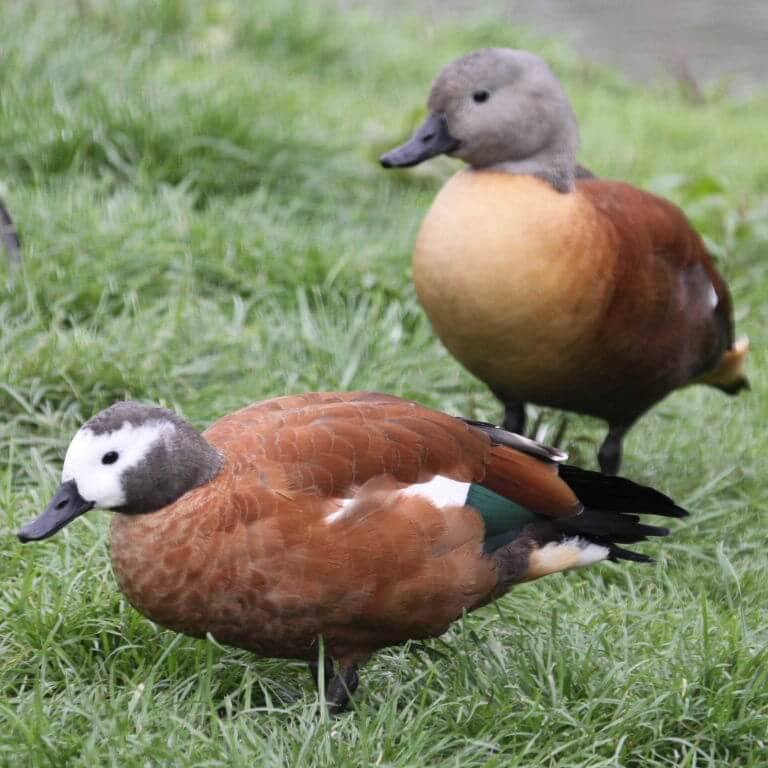South African Shelduck

Scientific Name
Tadorna cana
Alternative Names
South African shelduck, Cape shelduck
Measurement
| Measurement | Male | Female |
|---|---|---|
| Length | 64 cm (25 in) | 64 cm (25 in) |
| Wingspan | 87–125 cm | 87–125 cm |
| Weight | 1.5–2.3 kg | 1.5–2.3 kg |
Status and Origin
Native to southern Africa, mainly breeding in South Africa and Namibia. Listed as Least Concern by the IUCN. Protected under the Agreement on the Conservation of African-Eurasian Migratory Waterbirds (AEWA).
Identification
Adults have rich chestnut-brown bodies with wings marked in black, white, and green. Males have a grey head. Females have a white face with a black crown, nape, and neck sides. Juveniles are duller, and younger females lack white facial markings except for eye rings. Plumage on the female’s head becomes whiter with age.
Voice
Males give a deep honking or hoogh call. Females produce a louder and sharper hark call.
Diet
Omnivorous. Feeds on crustaceans, insect larvae, small aquatic life, grasses, and submerged plants. During the breeding season, diet consists mostly of seeds, corn, grain seedlings (wheat, barley, oats, sorghum), potatoes, peanuts, sunflower seeds, rice, figs, and other plant material.
Distribution
Occurs in South Africa, Namibia, Botswana, and Lesotho. Breeds mainly in South Africa and Namibia.
Habitat
Freshwater and brackish lakes, rivers, inland pools, mudflats, and open countryside in both lowland and upland areas. Often nests in abandoned burrows, especially those of aardvarks or jackals.
Wintering
In the austral winter, ducks migrate northeast to traditional moulting grounds where large flocks gather.
Breeding
Breeds in mammal burrows (often aardvark holes) or slopes near abandoned burrows. Clutch size ranges from 7 to 15 eggs. Incubation takes about 30 days. Fledging takes approximately 70 days. Ducklings are often led to “nursery waters” where several broods form a crèche under the care of one or more adults.
Behaviour
Nomadic outside the breeding season. Often seen in pairs or small groups. Not diving birds but can dive when threatened or injured. Ducklings dive freely. Active both day and night. Strong flyers and walkers.
Conservation
Population appears stable and increasing. IUCN status Least Concern. Threats include habitat disturbance from human activity, hunting for sport, and dependency on burrows of animals like black-backed jackals whose populations may be declining. Protected under AEWA.
